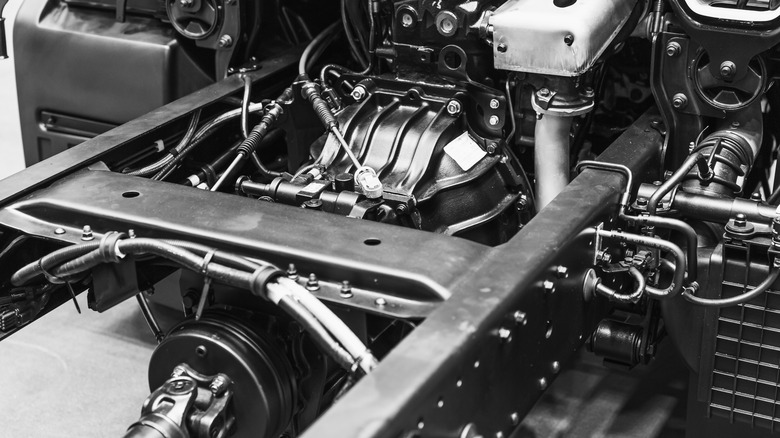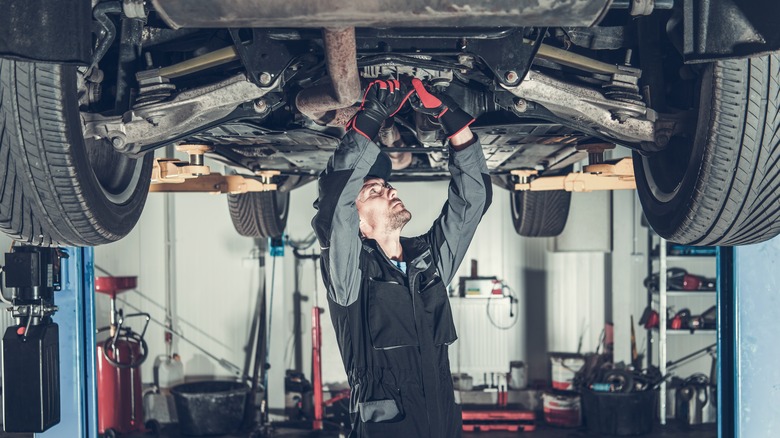What's The Difference Between A Drivetrain And A Powertrain?
The terminology that defines all the bits and baubles that make up an automobile can be complicated and exasperating. What's the difference between a transaxle and a transmission? A leaf spring and a coil spring? Or, as we'll confront in this particular article, the differences between the drivetrain and the powertrain. If these two "trains" aren't the same, why are they sometimes used interchangeably? And, if they're not the same – why not?
The short answer is they are not the same. Not exactly. Ironically — and to some degree confusingly, thus the reason they're sometimes swapped — they both perform a fundamentally similar function by producing the kinetic energy needed to move the vehicle forward from one place to another.
Let's dig a little deeper under the hood of this car-nundrum (sorry). The powertrain's five key components are the engine, transmission, driveshaft, axles, and differential, all acting in unison to power your car's wheels.
In simple terms, the engine produces the energy that powers the crankshaft (the engine's backbone) and converts linear motion into rotational motion. This motion is passed to the transmission and then to the spinning driveshaft, which in turn funnels torque to the drive axle's final drive gear and rear differential. The axles (which support the car's weight) power the wheels directly, and the rear differential lets both rear wheels spin at different rates. Why? Physics. When a vehicle turns a corner, the outside wheel must spin faster than the inside one (thank you, rear differential).
The drivetrain is part of the powertrain
Despite the term "drivetrain" sounding like a singular thing, it's actually a different grouping of components (and there's some overlap) — the transmission, differential, driveshaft, axles, and wheels. However, another part we haven't touched on yet that also belongs to the drivetrain is the Constant Velocity (CV) joints. These CV joints sit at each end of the drive shaft and not only connect the wheels to the axles (and transmission) but transfer torque to them as well.
So, what didn't we list that we've already discussed? The engine. The motor is a part of the powertrain but not a part of the drivetrain.
In essence, the drivetrain is just a part of the overall powertrain, but the motor is — dare we say — the head of the train, and without it, nothing else down the line works. Therefore, all the other parts of the drivetrain combine to make up the powertrain, which, as a unit, "transforms kinetic energy into propulsion motion," says authorized auto dealer Maxwell Ford.
Think of the powertrain as the all-encompassing umbrella term that includes all the moving parts while the engine and the drivetrain sit happily underneath. But wait! What about electric cars? While they have both a powertrain and a drivetrain, they differ from vehicles with internal combustion engines because most EVs don't have multi-speed transmissions. That, however, is a topic for another time.

